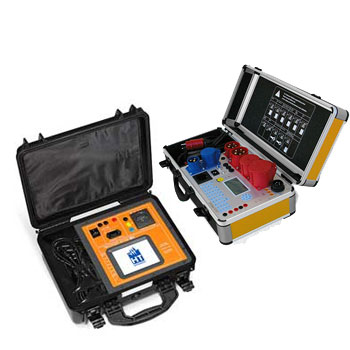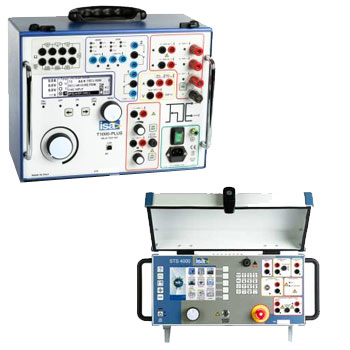
Temperature Sensors – RTD, Thermocouples & Smart Transmitters
Temperature sensors are the backbone of stable processes and quality assurance. Our portfolio includes resistance thermometers (RTD, e.g., Pt100/Pt1000), thermocouples (TC, e.g., Type K/J/N/T), surface/air/duct probes, screw-in sensors, thermowells, and head/field transmitters for 4–20 mA/HART, RS-485/Modbus, IO-Link, and Ethernet. Options are available for hygienic, high-temperature, hazardous (Ex), and fast-response applications.
ICS Schneider Messtechnik supports selection and sizing (immersion length, thermowell, materials), calibration and—if desired—IIoT integration into Edge/SCADA/Cloud. The result: reliable measurements, traceable quality, and minimized downtime.
FAQ on Temperature Sensors
Practical answers on sensor principles, accuracy, installation, thermowells, digitalization and calibration.
RTD or thermocouple – which fits my process?
| Criterion | RTD (Pt100/Pt1000) | Thermocouple (e.g., Type K/J/N) |
|---|---|---|
| Accuracy/Drift | Very good / low drift | Good / higher drift at high T |
| Measuring range | ≈ −200…+600 °C | up to ≈ +1350 °C (type dependent) |
| Wiring | 2/3/4-wire possible | Cold-junction compensation required |
| Response time | Good | Very good (fine wires) |
| IoT integration | Very convenient with head TX | With head TX or special modules |
Which form factors are available?
- Screw-in sensors with process connections (G/NPT, Tri-Clamp, flange)
- Insertion/pipe sensors with thermowell for pressurized media
- Surface probes (band clamp, magnet, spring)
- Air/duct sensors for HVAC/ambient
- Non-contact (IR) for moving/hot surfaces
2-, 3- or 4-wire for Pt100?
| Variant | Advantage | Disadvantage | Recommendation |
|---|---|---|---|
| 2-wire | Simple, low cost | Lead resistance error | Short runs, low accuracy |
| 3-wire | Good compromise | Requires symmetry | Industry standard |
| 4-wire | Best accuracy | More effort | Calibration/quality loops |
What is a thermowell for?
It protects the probe against pressure/flow/corrosion and enables probe replacement under operation. Geometry affects response time—stepped-bore wells react faster.
What immersion length should I choose?
Rule of thumb: ≥ 10 × outer diameter (min. 50 mm). For pipes: align with flow, avoid wall proximity/heated surfaces.
How do I connect sensors digitally?
RTD/TC → head transmitter (4–20 mA/HART/RS-485/IO-Link) → Edge gateway → MQTT/HTTPS → dashboard/alarms/reports. Consider certificates/roles, TLS/VPN and audit logs.
What accuracy is realistic?
RTD with head TX typically ±0.1…0.3 K; TC ±0.5…2 K (type/temperature). The total error band incl. installation, drift and transmitter matters.
How often should I calibrate?
Recommendation: annually; in critical applications semi-annually/quarterly. Check immediately after over-temperature or mechanical shock.
Which materials are available?
Stainless steel 316L as standard, optional Hastelloy®/Titanium for aggressive media, and hygienic designs (Tri-Clamp/Varivent®) for food/pharma.
How do I minimize EMC influences?
Use shielded, twisted pairs; separate power/signal routing; correct grounding; short stubs; for RS-485 observe termination/biasing.
Which transmitter features are useful?
- Dual-sensor (backup/average) and sensor drift/break detection
- Linearization, scaling, filter/hysteresis
- Diagnostic flags, stable device IDs for clean topic design
What to consider in hazardous areas (ATEX/IECEx)?
Appropriate protection (e.g., Ex ia/Ex d), intrinsic safety barriers/isolators, temperature-resistant cables/gaskets, correct documentation for the explosion-protection plan.
How do I select the measuring range?
Normal operation should be in the middle third of the range. Allow headroom for peaks; for fast processes mind response time/well design.
Typical error sources?
- Insufficient immersion → systematic offset
- Heat bridge via fitting → skewed values
- Wrong emissivity (IR) → large deviations
- Unvented thermowell → sluggish response
Which data belong in the historian?
Raw values (possibly downsampled), min/max/avg, alarm events/acknowledgements, status/diagnostics, calibration/maintenance events; consistent units (°C) and UTC timebase.
Do you support sizing & commissioning?
Yes. We size probes/thermowells/transmitters, define sampling rates/alarms, supply calibration certificates and integrate with PLC/Edge/Cloud on request.















































































































































































